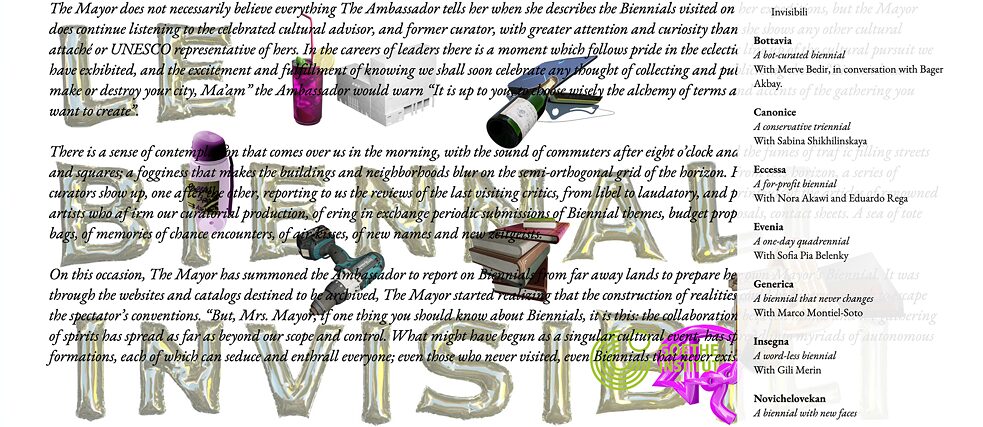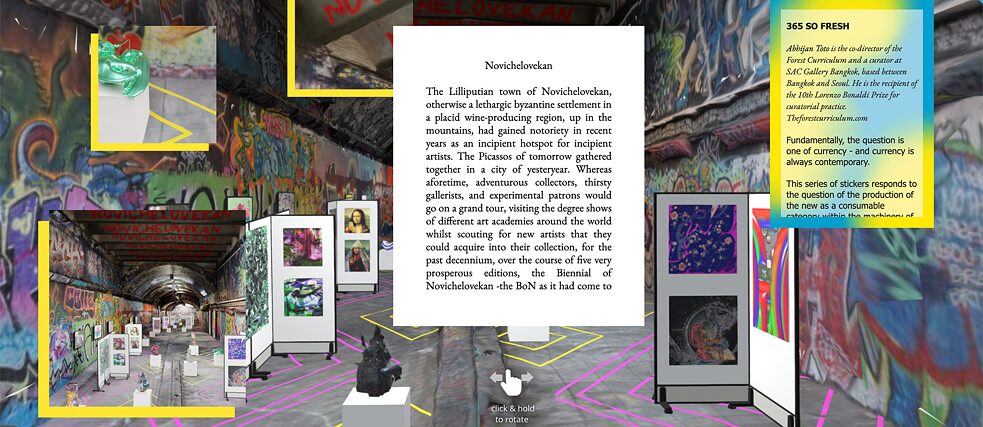“Le Biennali Invisibili”
The Invisible Biennials

Defending the possibilities of culture against a world that is increasingly perceived as “hellish”: Le Biennali Invisibili (The Invisible Biennials), a project commissioned by the Goethe-Zentrum Baku, is showing an online biennial inspired by Italo Calvino’s Invisible Cities.
By Georg Seeßlen
Disappearance in general, becoming invisible in particular, is one of the big questions of the postmodern age, which no longer goes by that name, but perhaps can be called the age between crisis and catastrophe. “Why Hasn’t Everything Already Disappeared?” That’s the question that the wonderful band Deerhunter poses on the album of the same name: the disappearance of culture, humanity and nature and the battle that art is waging against it.
With the coronavirus pandemic, disappearing and becoming invisible has changed from a rather philosophical and discursive problem to an immediate and painful experience for many people. In this time of reduced encounters, reduced public life, through to lockdown and quarantine, what’s disappearing before our eyes – besides nature and humanity (in the sense of practiced benevolence) – are culture and art above all. The theatres, the cinemas, the galleries and the museums are disappearing, more precisely, they are becoming places battling against their disappearance. Just as they were once the places where the battle against the disappearance of the world was waged, they now resemble the “invisible cities” that Italo Calvino wrote of in 1972: unheard-of, bizarre and mysterious places in which all people’s wishes and fears are reflected.
The effects of the invisible
This literary model is emulated by the concept of the “invisible biennale,” which Eduardo Cassino, Tijn van de Wijdeven and Animali Domestici (Alicia Lazzaroni and Antonio Bernacchi) set up for the Goethe-Zentrum Baku and for the rest of the world. The invisible cities have been replaced by curatorial projects, a series of virtual art projects that create their own critical environment, their own literary echo chamber. For Calvino, what defines a city as a civilizing project is paradoxically its invisibility. Similarly, in Le Biennali Invisibili, the idea and essence of biennial curating only becomes clear through its material impossibility. In the online exhibition, pictures and essays, art and criticism meet in a dialogic process with an undefined outcome. And what this creates is a living meta-work of art that can be visited in a virtual environment on its own website. “Novichelovekan, a biennial with new faces” with Abhijan Toto – one of the online exhibitions for the Le Biennali Invisibili project | Illustration (detail): Animali Domestici
“Novichelovekan, a biennial with new faces” with Abhijan Toto – one of the online exhibitions for the Le Biennali Invisibili project | Illustration (detail): Animali Domestici
Possibilities of curating
The digital project of the Biennali Invisibili is one of the art encounters on the Internet that are not just a substitute for encounters in the material cultural space, but also reflect the current situation and its possible consequences. The chance to pause and reflect is used to deal with various problems and conditions of curating which, like in the invisible cities, show up as poetically condensed models. And as with Calvino, it is about defending the possibilities of culture against a world that is increasingly perceived as “hellish.” This also involves the possibility of artistically communicating with one another in the spirit of the Goethe-Institut, across the borders of nations, ideologies, and even warlike fronts. The Le Biennali Invisibili project is a model of cooperation in a world of isolation. It is also an adventurous journey through the border areas between art and society.Author
Georg Seeßlen is a freelance writer, columnist and cultural journalist.